At the end of September, a friend asked if I could give our church’s well-worn nativity figures “a coat of paint.” These fiberglass forms are set up every Advent in front of the church under the shelter of a wooden creche. They likely date to the early 1960s. The human figures vary from about three to four feet in height. Hollow, they’re filled with sand to weigh them down. I hadn’t given them a very close viewing, ever. I only remember thinking that they could look better.
My friend had noticed that many of the forms were chipped, with patches of peeling paint. When he asked me to repaint them, I think he was envisioning a quick coating to cover the bare spots and reseal the fiberglass.
But I couldn’t do only that. The colorless faces called out for definition, for enlivening touches. The eyes, in particular, were empty and blank. The clothing could benefit from gradations in hue and shadow. The faces and bodies needed nuance.
As I mentioned in an October post, the task of improving the animals struck me as less daunting, so I started with them. I’m generally not a painter of people, and the human forms, I knew, would be challenging. I began with Mary. It was an easy decision to replace her golden hair with dark brown, but her smooth, oval face proved especially troublesome. I kept returning to her as I worked on the others. Gradually, she gained a bit of character. Once I darkened Joseph’s eyes and eyebrows, he was revealed to be quite handsome.
I brightened up the angel’s ghostly pallor in her face and wings. She’s one of the few figures to have ears. I tried to reduce somewhat the size of her right ear, which was particularly prominent. She still has a rather elfin look, which I find charming.
The shepherd’s expression, before, was a grumpy, curmudgeonly squint. I tried to give him a more benign, dignified demeanor. I also changed his purple cloak to one of brown. Purple dye, during ancient times, was exorbitantly expensive, since it was painstakingly produced from the glands of huge numbers of small sea snails. It was a color for kings, not for humble shepherds.
The sole Biblical source for the three Magi is the Gospel of Matthew (2:1 – 12) which refers to “wise men from the East,” likely not kings at all, but astrologers, as they were led by a star to Bethlehem and the home of the holy family. Their gifts of gold, frankincense and myrrh attest to their substantial wealth. Because of their Eastern origins, they were probably not Jews. Some sources suggest that they could have been priests of the Zoroastrian religion, widely practiced throughout Persia. Their inclusion in the nativity story serves to demonstrate a crucial point: the baby Jesus was sent by God to be a savior not only for the Hebrew people, but for all nations. It was in early medieval times that the wise men began to be identified as kings, each hailing from one of the three known continents of Europe, Asia and Africa. The message in this identification is clear: the baby in the manger offers salvation to everyone, the world over.
The faces of the three kings were already nicely differentiated from each other. Because of their distinctive features, they required the least of my efforts. A more subtle application of paint brought out their personalities and enlivened them.
Of all the forms, the camel was probably the least in need of a makeover. I lightened his coat and touched up his face. His regally fringed saddle and harness needed only some shading and glints of deep red.
Finally, when the last coat of polyurethane had been applied (some eighty hours of work having passed since I dipped a brush into primer to start on the little lamb) it was time for the group to leave my mother’s house. Mama and I were sort of sad to see them go, as they’d appeared very much at home in her living room. I couldn’t squeeze the entire group into my little car at once, so I made two trips. They were pleasant passengers.
Now the nativity figures are outside our church, in their usual positions in the creche. There is a notably empty space at the center, between Mary and Joseph. That blank spot speaks to the essence of Christmas. No amount of elaborate decorating, or frenzied holiday partying, or masses of material gifts, can satisfy that hollow place in our souls. But if we let it, God’s love can fill us to overflowing, so that we may be bearers of kindness and compassion to those who need it most. Our world is often dark. But with the true gift of Christmas, we can bring the light.
Let’s all bring a little light, this holiday season!

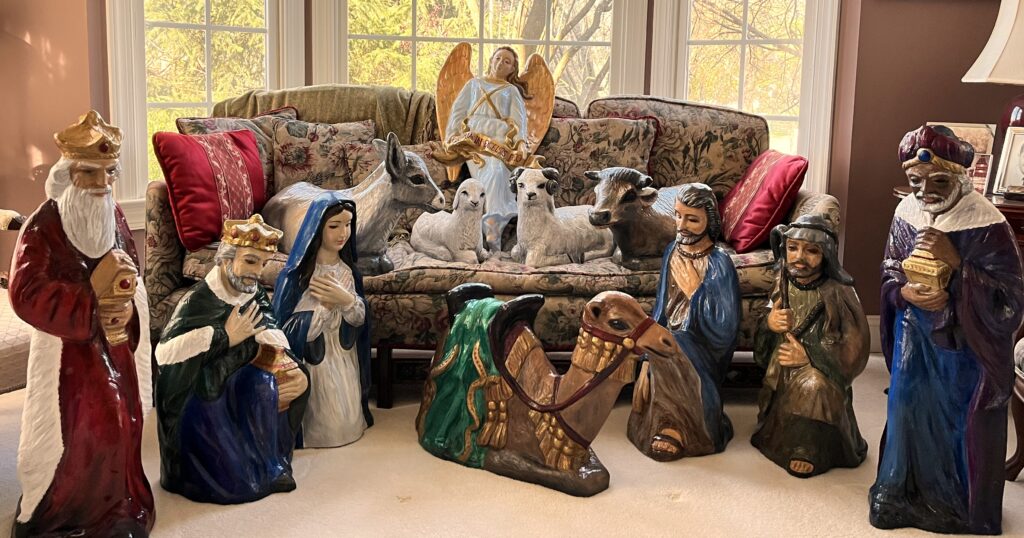
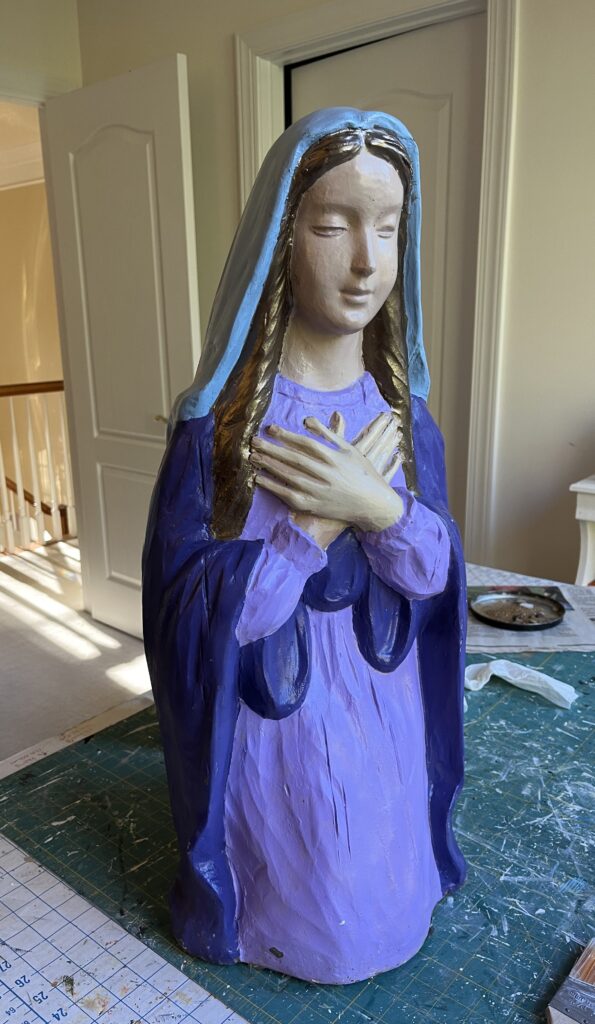
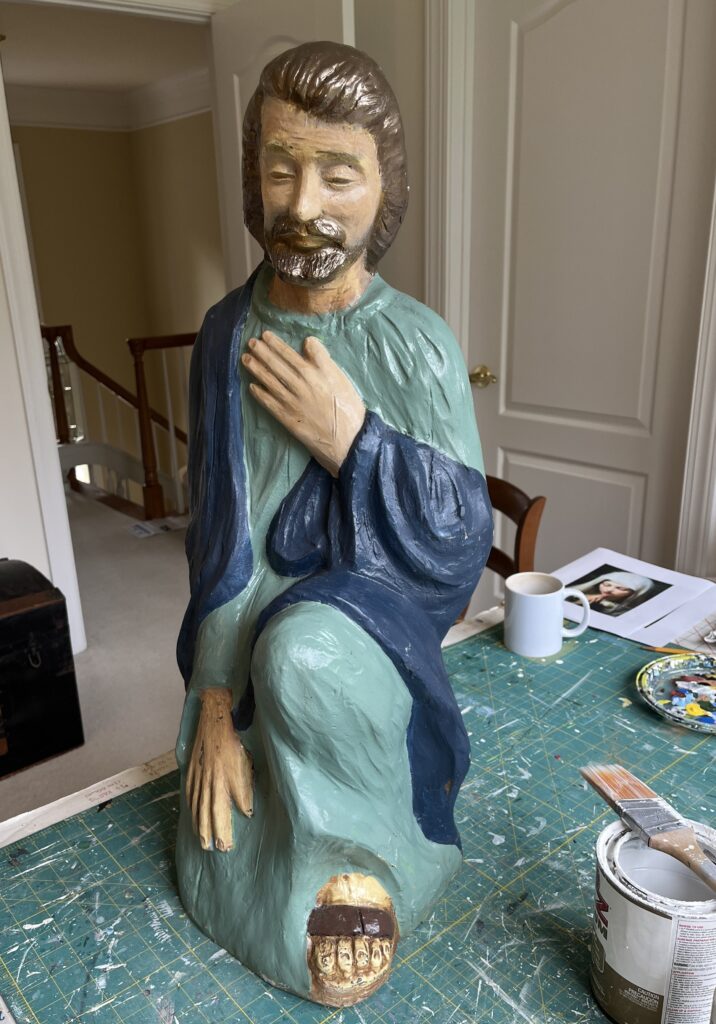
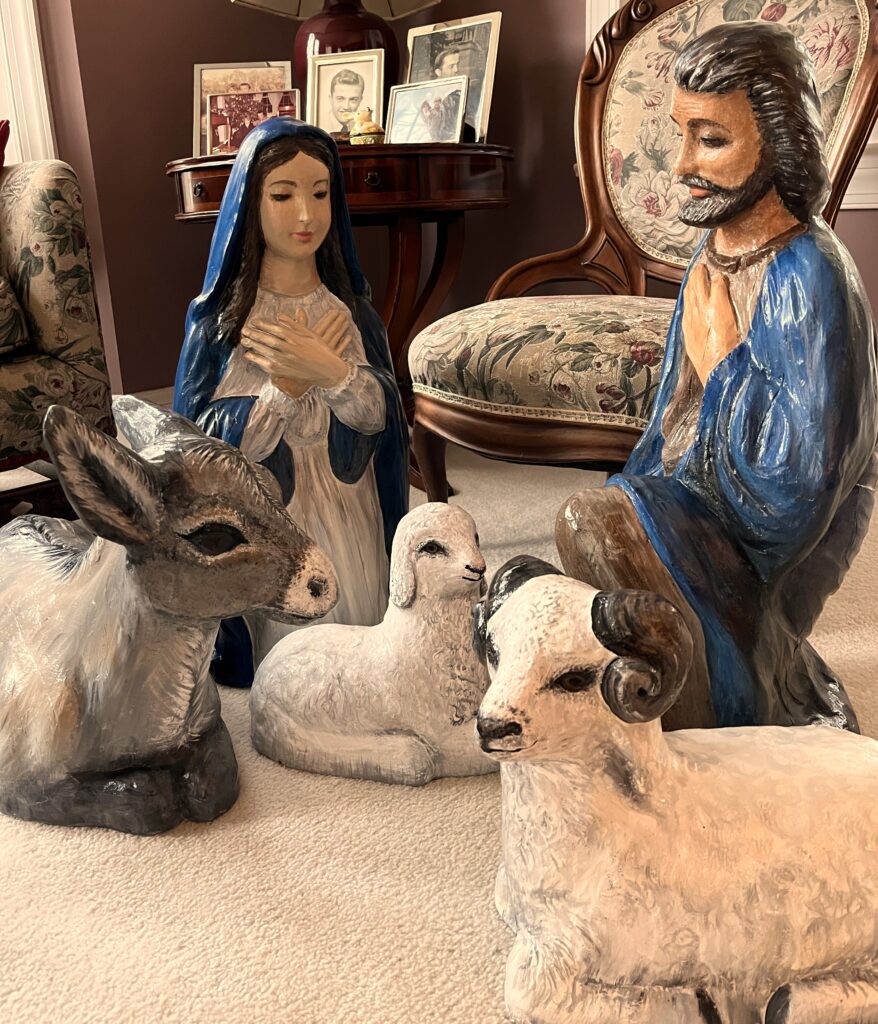
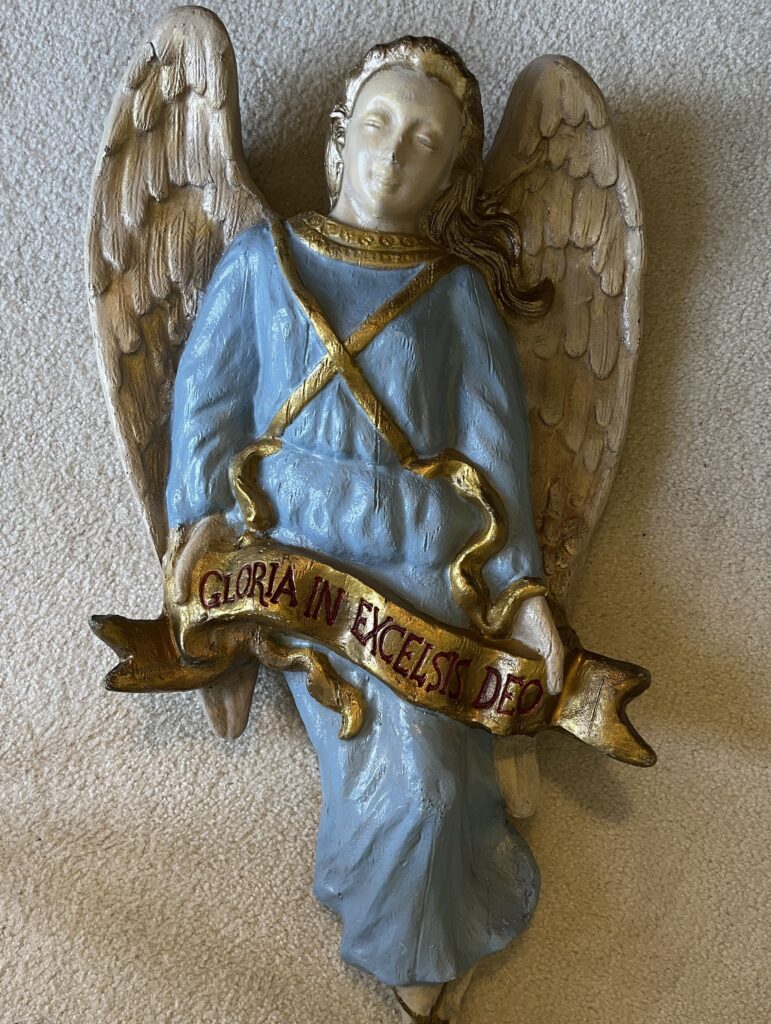
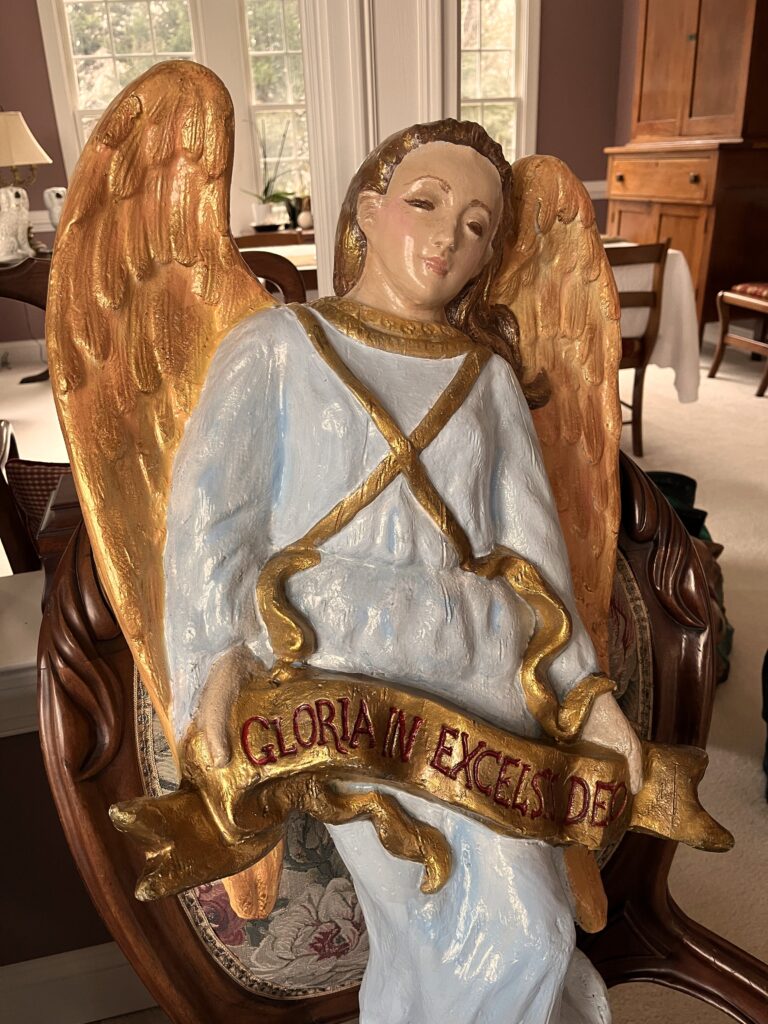
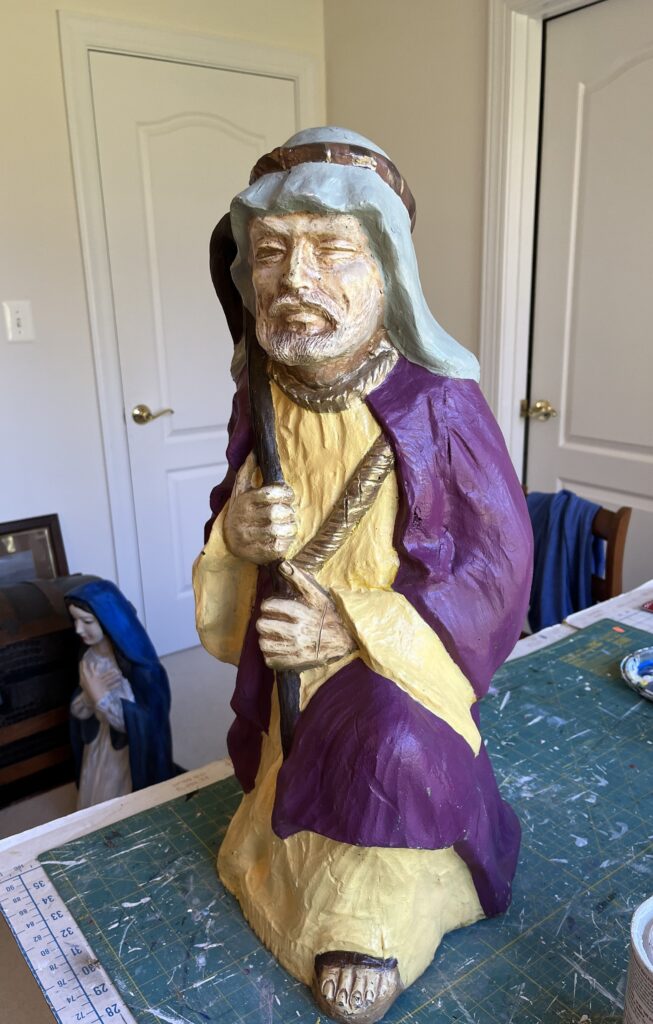
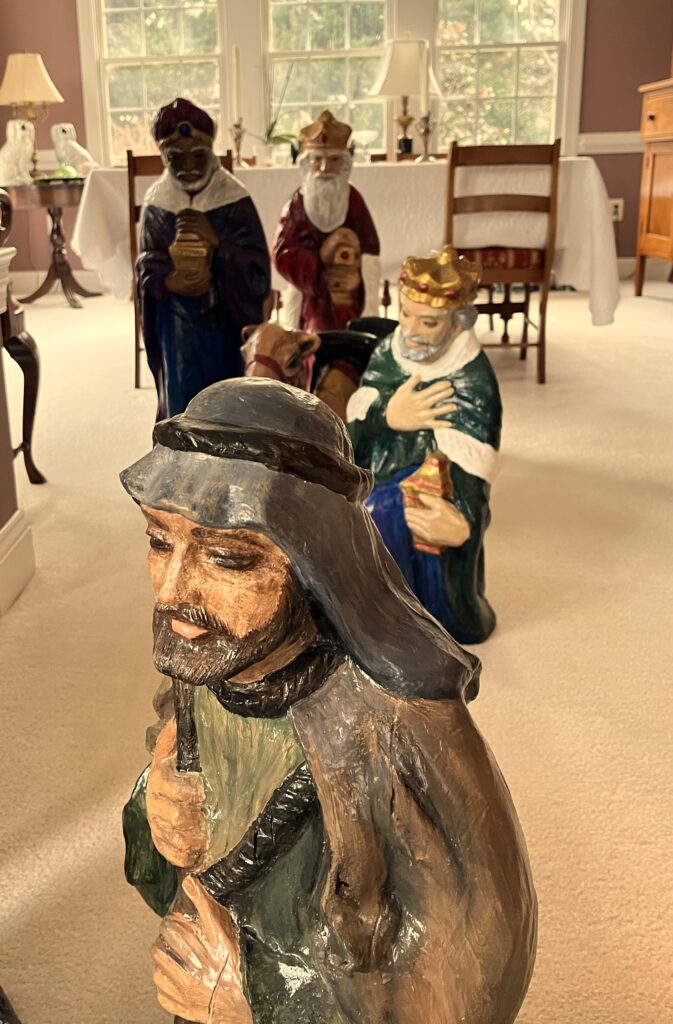
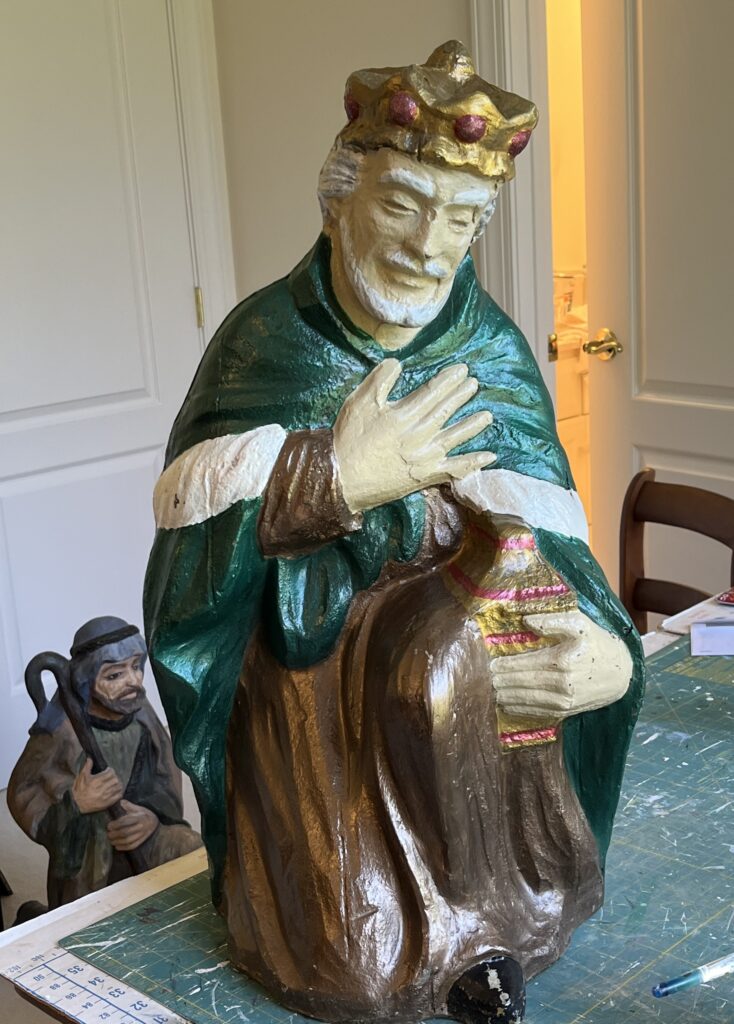
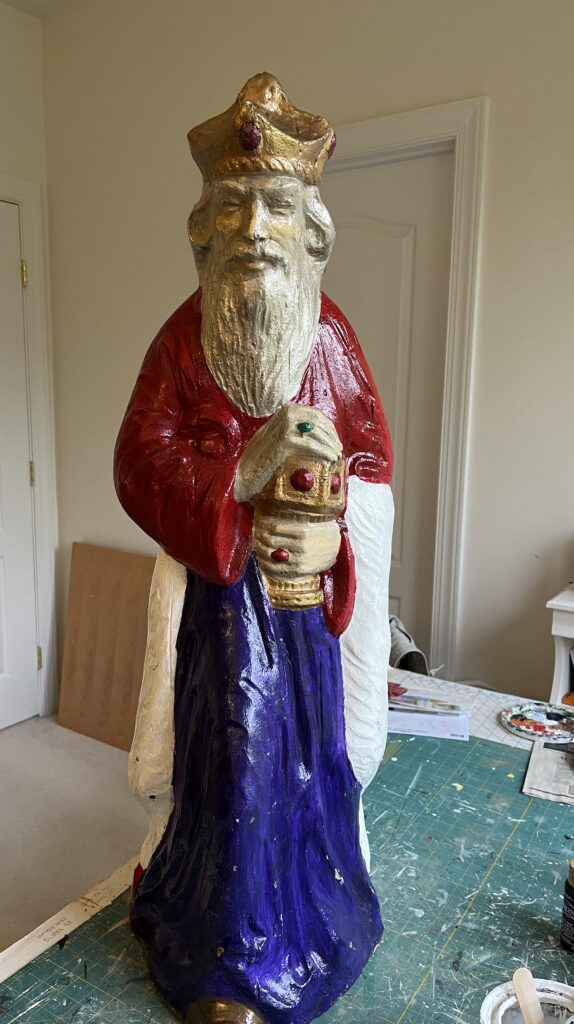
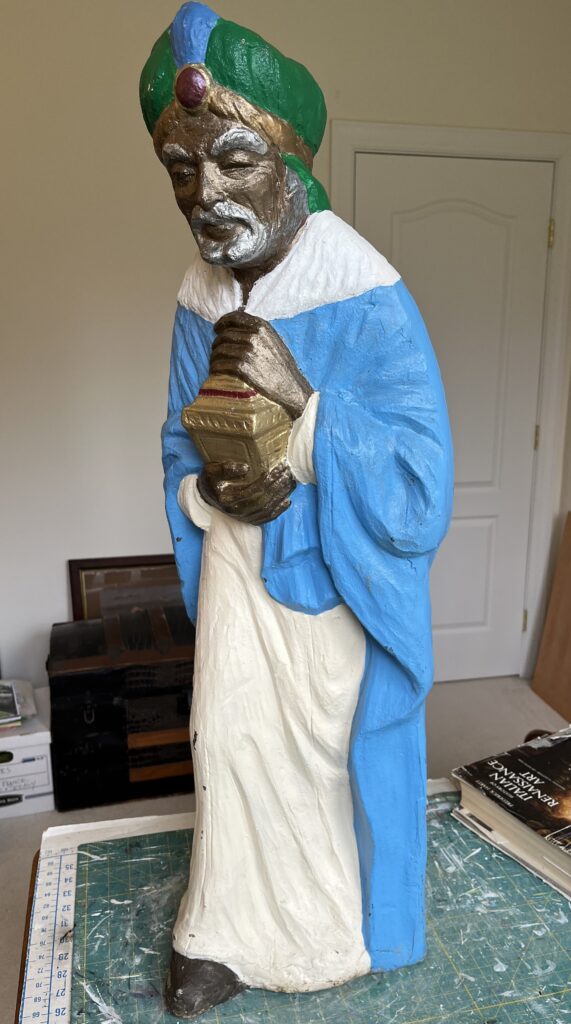
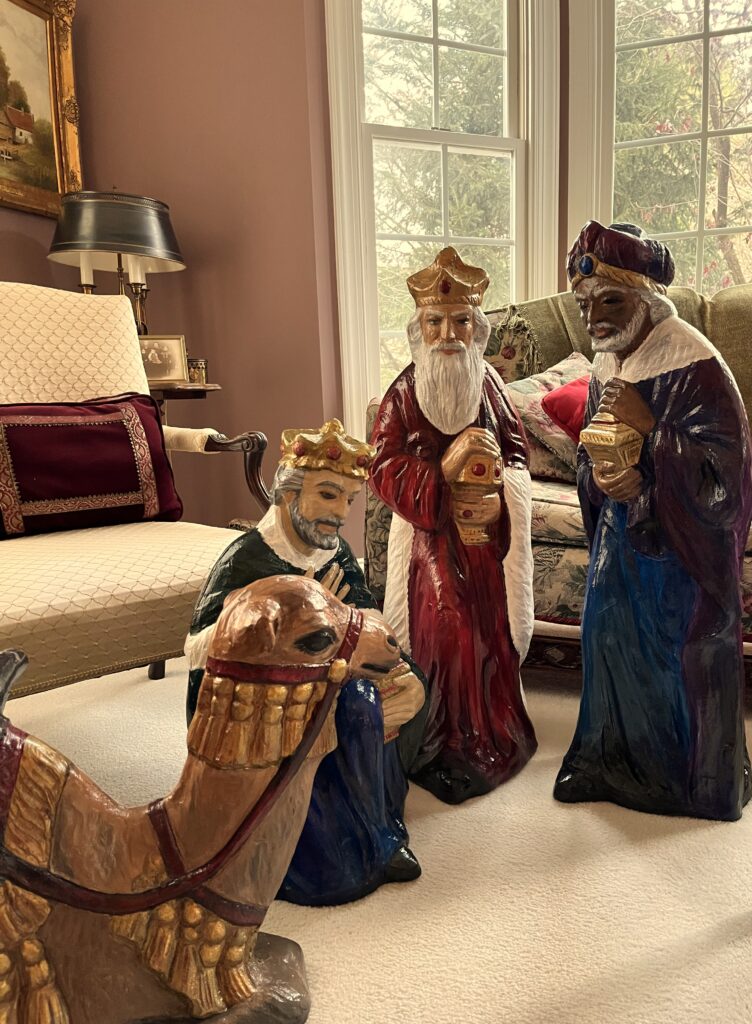
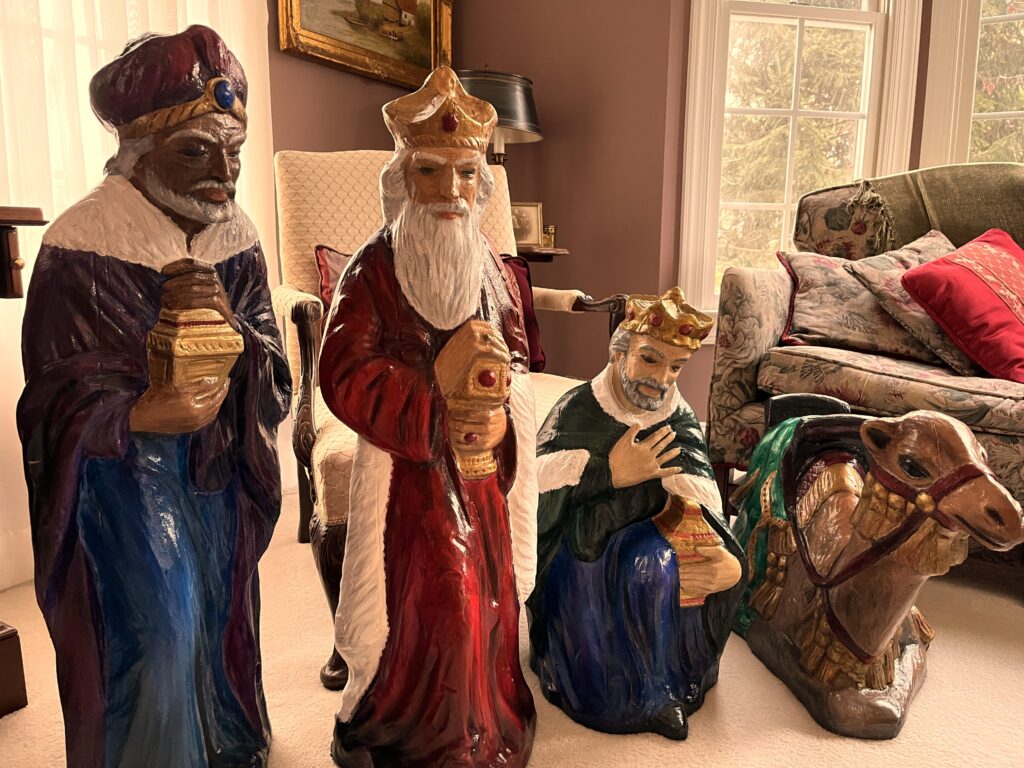
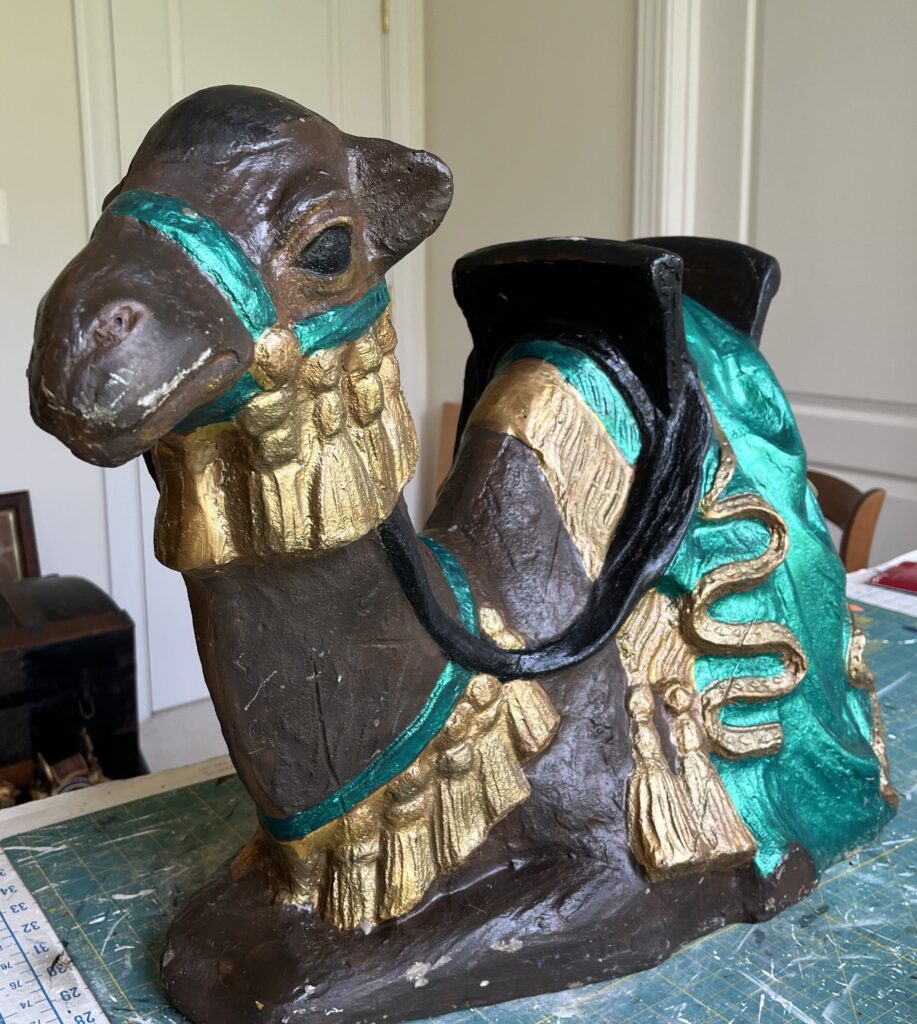
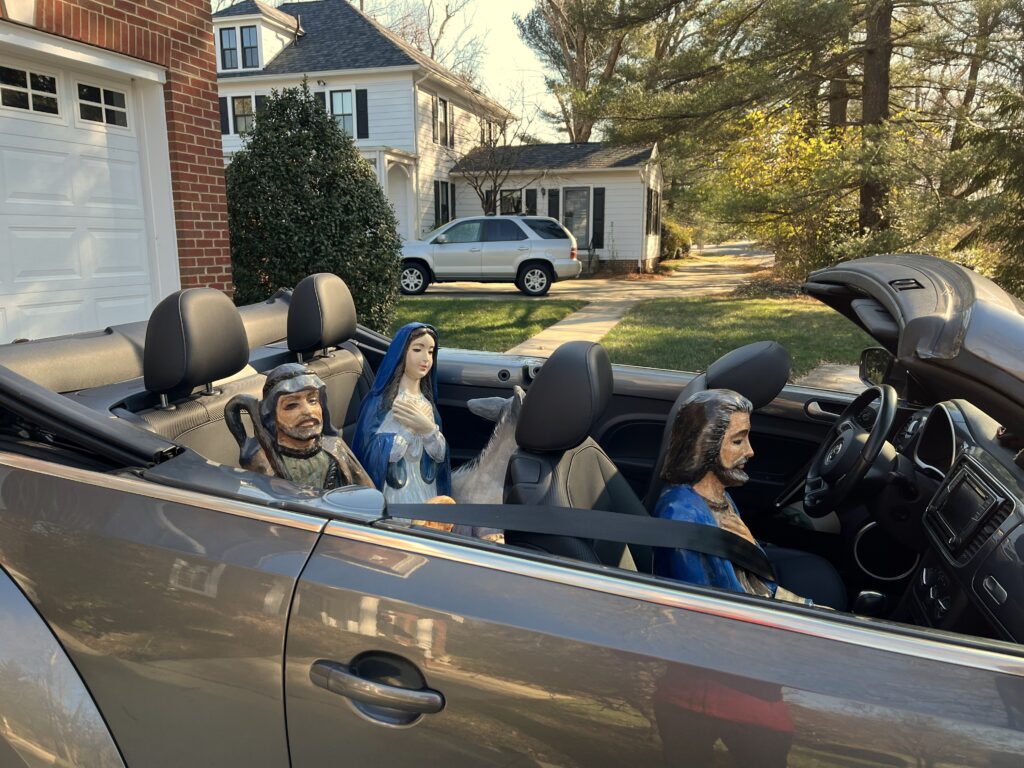
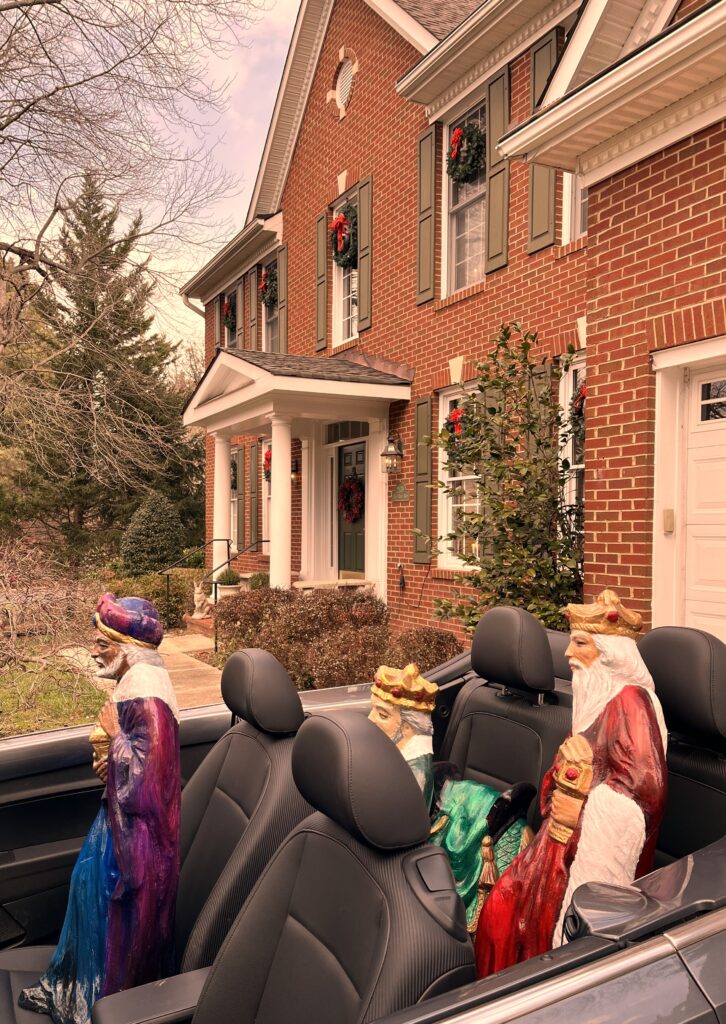
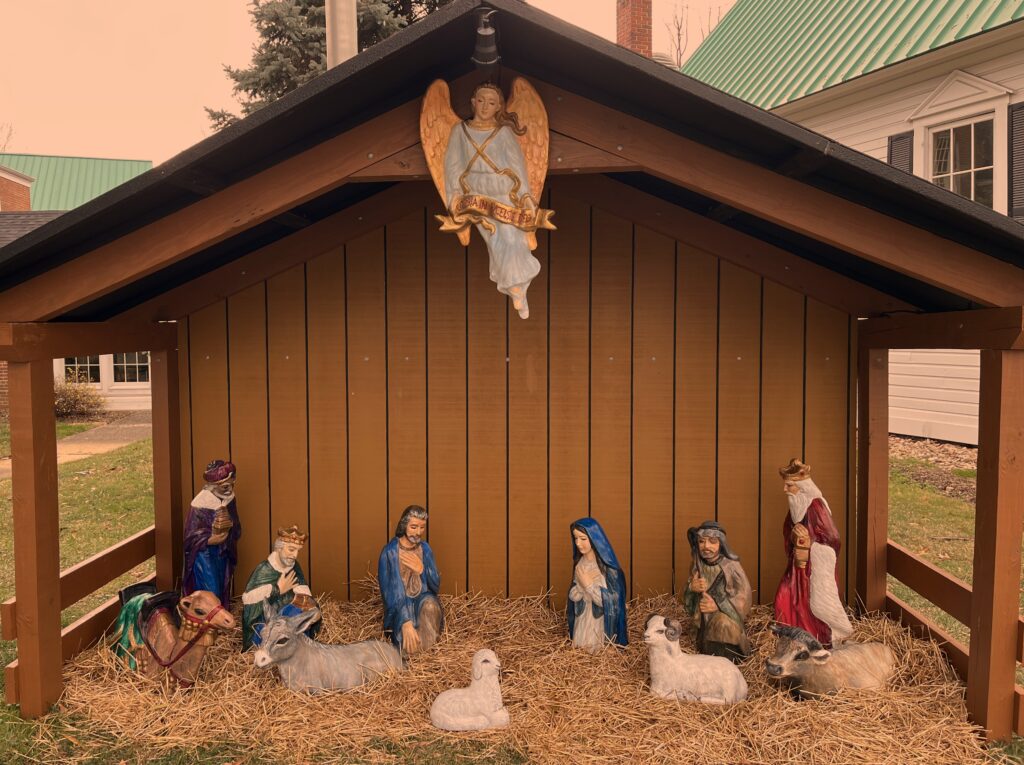
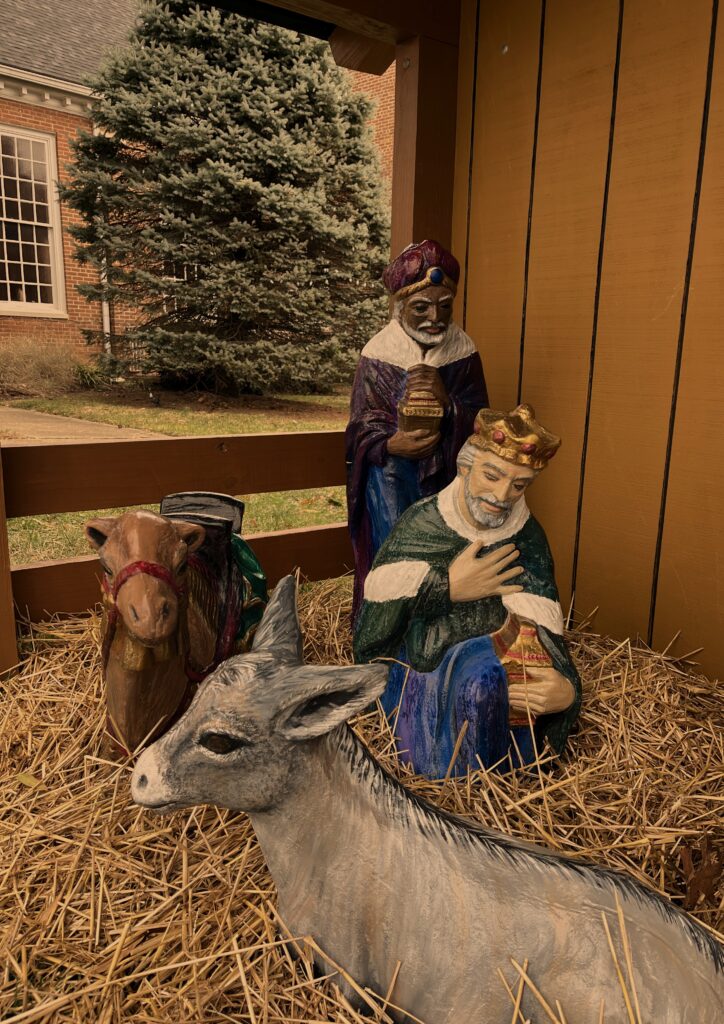
Wonderful work! Thank you for the explanation of your approach to restoring each of these weathered figures. I am sure that 8 of an average 10 people among us would never think of “a glint of red” to brighten a figure as you did. (I am the majority, for sure.) You have truly given personality to this special group. Thank you!
Thank you, Bruce! Without you, the project never would have happened. And I might not have taken it on if anyone else had asked! I appreciate the comfy “bunks” you’ve created for storage. I can rest assured that the nativity gang is resting safely during the eleven months of their off season!